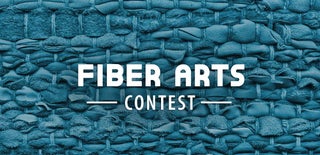Introduction: Dyeing Yarn With Leftover Egg Dye
Dyeing eggs is fun, but have you ever wondered if there's more to be done with the leftover dye than just pouring it down the drain? There is! This instructable will show you how to dye yarn or fiber easily and quickly with supplies you probably already have at home.
To dye a protein-based fiber like wool or silk, you need three things: color, acid, and heat. Your egg dye mix should already provide the color and acid (usually vinegar); we will add the heat with the microwave.
In the pictures, I am dyeing 100% wool roving, to be spun into yarn.
Supplies
-leftover egg dye, from a kit or made yourself with food coloring
-microwave-safe cups
-white or natural color yarn, fiber, or cloth, not more than will fit in your dye cups. Use a protein fiber (wool or silk), or the dye won't stick.
-microwave
Step 1: Pre-wet the Yarn
Using room-temperature water, wet the yarn or fiber until it is soaked through, then squeeze out excess water so that it's wet but not dripping. This makes it easier for the fiber to take up the dye, and it's important for safety since you'll be heating it in the microwave.
Step 2: Decide on a Color Scheme
What makes using egg dye so fun is that you already have a rainbow of colors to choose from. I gravitate toward a rainbow gradient, but you have lots of options.
-Will you use all the colors?
-If doing a rainbow, where will you start and end?
-Will you dye one big skein of yarn, or several little ones?
-Will you leave any of the yarn undyed?
Step 3: Microwave!
Place the (microwaveable) cups of dye in the microwave. Arrange the fiber in the dye as you please - it may help to poke at it with a spoon to increase dye coverage. Again, make sure all the fiber is wet!
Microwave on full power until the fiber is hot - about 1-2 minutes. This sets the dye.
Let cool fully.
Transfer to the sink - it may be helpful to borrow a friend if you have a lot of cups! Rinse the fiber under cool water until the water runs clear. Squeeze out excess water and hang up to dry.
Step 4: Finished and Notes
You're done! Use your new colorful fiber in a project, or just keep it around to gaze at. :)
I should note that because egg dye is made for eggs, not yarn, colorfastness isn't guaranteed - but I've never had an issue with fading or bleaching on anything I've dyed this way.

Participated in the
Fiber Arts Contest









